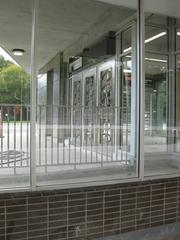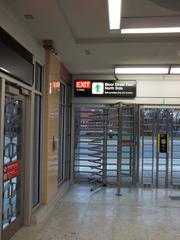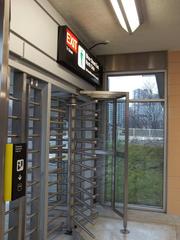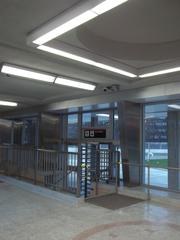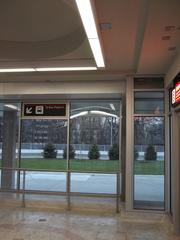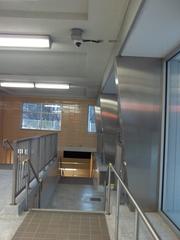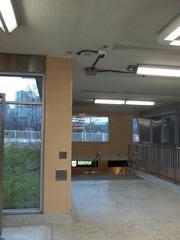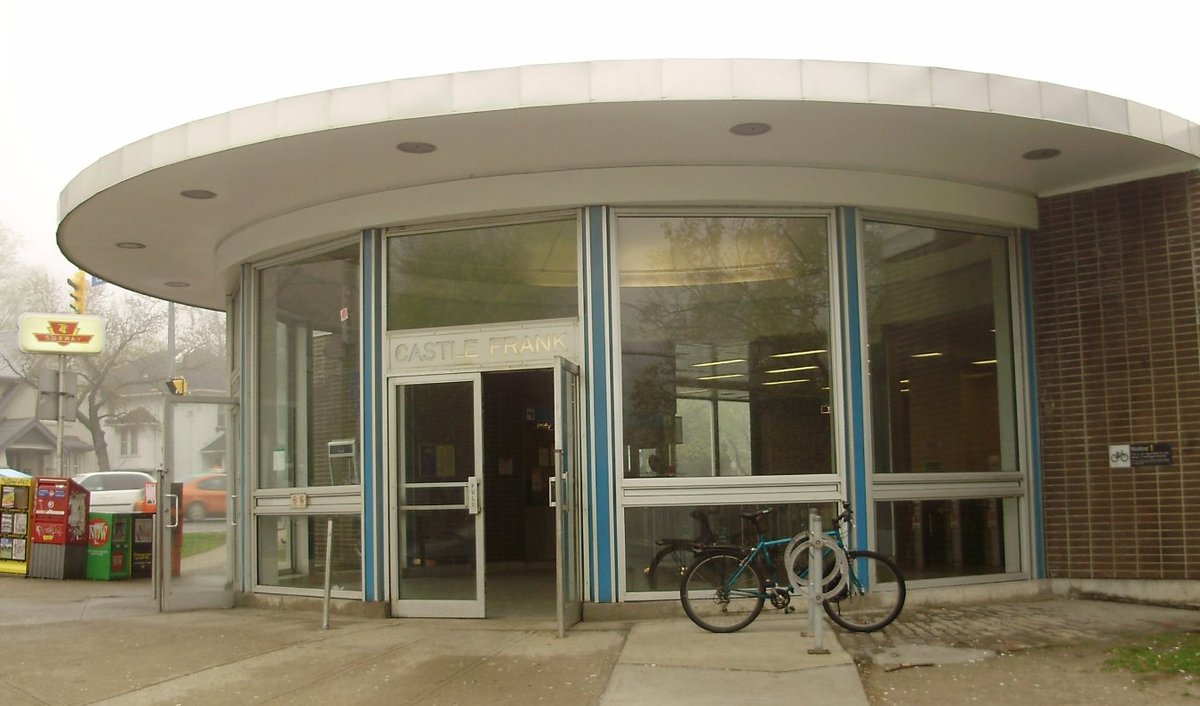
Castle Frank Toronto: Visiting Hours, Tickets, and Historical Sites Guide
Date: 15/06/2025
Introduction
Castle Frank, set atop a scenic hill overlooking Toronto’s Don River, remains a powerful emblem of the city’s colonial origins and architectural legacy. Although the original summer residence of John Graves Simcoe—the first Lieutenant Governor of Upper Canada—no longer stands, the site and its surrounding parklands provide a unique blend of historical context and natural beauty. This guide offers a comprehensive overview, including practical visiting information, the site’s architectural and cultural significance, and tips for exploring nearby attractions. Whether you are a history buff, urban explorer, or nature lover, Castle Frank offers a layered experience that connects Toronto’s past with its present. For further details and historical background, refer to The Canadian Encyclopedia, Toronto History, and Scenes From Toronto.
Table of Contents
- Introduction
- Historical Overview
- Architectural Features and Style
- Cultural Significance and Legacy
- Visiting Castle Frank: Practical Information
- Exploring Castle Frank and Nearby Attractions
- Visitor Tips and Accessibility
- Photography and Etiquette
- FAQs
- Conclusion
Historical Overview
Origins: The Simcoe Family and Early Toronto
Castle Frank was built between 1794 and 1796 as a rustic yet grand log residence for John Graves Simcoe and his family. The estate was named after Simcoe’s son, Francis Gwillim Simcoe, and represented the ambitions of the colonial government in Upper Canada. The house, designed in a Georgian style with neoclassical influences, was perched on a dramatic hilltop to take advantage of panoramic views and breezes, as noted in Elizabeth Simcoe’s diaries (The Canadian Encyclopedia, Toronto History).
The Estate’s Role and Decline
Castle Frank served as a summer retreat and a symbol of colonial authority, with the Simcoes hosting official guests and events. Its location near the Don River and the early town of York (now Toronto) was both picturesque and strategic. However, after the Simcoes returned to England in 1796, the estate fell into neglect. By the early 1800s, Castle Frank was abandoned, periodically used by others, and ultimately destroyed by fire in 1829 (The Canadian Encyclopedia).
Enduring Legacy
Though the original structure is gone, Castle Frank’s legacy endures in the city’s landscape and memory. The name lives on through local landmarks—Castle Frank Road, Castle Frank Crescent, and the Castle Frank subway station. A commemorative cairn, erected in 1954 at Prince Edward Viaduct Parkette, marks the site and offers a place for reflection (Scenes From Toronto).
Architectural Features and Style
Castle Frank was notable for its adaptation of neoclassical elements to the Canadian wilderness. The house was built from white pine logs, measuring about 10 by 30 metres, and featured a Greek temple-style portico with 5-metre-high columns—an unusual sight in Upper Canada at the time (NOW Toronto). The interior included a central hall, flanked by large rooms with fireplaces and ample windows for natural light. These architectural choices influenced the Ontario cottage style, blending practicality with formal aesthetics (OAA Blog).
Cultural Significance and Legacy
Castle Frank stands as a symbol of Toronto’s early colonial ambitions and the transplantation of British values to North America. The estate’s history is deeply intertwined with both the Simcoe family and Toronto’s development. Its construction marked a significant moment in the city’s architectural evolution, and its disappearance reflects the changing priorities and patterns of land use in Toronto (Scenes From Toronto). The area is also recognized as Indigenous land, and visitors are encouraged to acknowledge these deeper histories (Indigenous Toronto Experiences).
Visiting Castle Frank: Practical Information
Visiting Hours & Admission
- Hours: Open year-round, from dawn until dusk, as part of Toronto’s public park system.
- Admission: Free; no tickets or reservations required.
Location & Access
- Address: Near the intersection of Bloor Street East and Castle Frank Road, adjacent to Castle Frank subway station (Castle Frank Station Information, TTC)
- Transit: TTC Line 2 (Bloor-Danforth) to Castle Frank station; limited street parking available.
Accessibility
- Paths: Paved and mostly accessible, with gentle slopes; some trails in the Don Valley may be uneven.
- Amenities: Benches, shaded areas, and interpretive signage. No public washrooms or food vendors directly on site; nearest facilities at the subway station or nearby parks.
Exploring Castle Frank and Nearby Attractions
Walking & Hiking
- Trails: Rosedale Ravine and Don Valley trails offer scenic walking and cycling routes. Portions of the original bridle path are still accessible as park trails (Scenes From Toronto).
- Nature: The area features mature trees, native flora, and opportunities for birdwatching.
Historical Landmarks
- Commemorative Cairn: Marks the original site of Castle Frank at Prince Edward Viaduct Parkette (Evendo).
- St. James Cemetery: Historic cemetery with winding paths.
- Bloor Viaduct (Prince Edward Viaduct): Iconic bridge with pedestrian walkways and city views (BlogTO).
Other Nearby Attractions
- Riverdale Park East: Great for city skyline views.
- Allan Gardens Conservatory: Historic greenhouse nearby.
- Cabbagetown: Heritage neighbourhood with Victorian architecture.
- Distillery District, Casa Loma, Toronto Islands, Art Gallery of Ontario: All accessible by public transit (Casa Loma, Canadian Train Vacations, Ontario Away).
Visitor Tips and Accessibility
- Best Time to Visit: Spring to autumn for pleasant weather and vibrant foliage.
- What to Bring: Comfortable shoes, water, snacks, weather-appropriate clothing.
- Photography: Early morning and late afternoon provide optimal light. Drones require special permits (Film & Photography Permits).
- Pets: Allowed, but must be leashed; owners must clean up after them.
- Safety: Stay on marked trails; area is safe and well-patrolled, but always be aware of surroundings.
Photography and Etiquette
Respect the tranquil setting: keep noise low, avoid disturbing natural features or signage, and observe “leave no trace” principles. When sharing photos online, use hashtags like #CastleFrank and #TorontoHistory to help raise awareness of the site’s heritage.
Frequently Asked Questions (FAQs)
Q: What are Castle Frank’s visiting hours?
A: Open daily from dawn until dusk, year-round.
Q: Is there an admission fee?
A: No, the site is free to visit and does not require tickets.
Q: Can I visit the original Castle Frank house?
A: The original structure was destroyed in 1829. Today, the site is marked by a commemorative cairn and interpretive signage.
Q: Are guided tours available?
A: There are no regular guided tours, but local historical societies occasionally organize walking tours. Check the City of Toronto’s events calendar for updates.
Q: Is Castle Frank wheelchair accessible?
A: Main park areas and paths near the subway station are accessible; some ravine trails are steep and may be challenging for those with mobility issues.
Q: Are pets allowed?
A: Yes, on a leash; owners are responsible for clean-up.
Conclusion
Castle Frank stands as a quiet yet enduring symbol of Toronto’s colonial beginnings, architectural innovation, and evolving urban landscape. The absence of the original house is balanced by the richness of the surrounding parklands, commemorative markers, and the site’s ongoing significance in the city’s geography and collective memory. With easy access, free admission, and a wealth of nearby attractions, Castle Frank is an essential stop for anyone interested in Toronto’s history, nature, and community. For the latest updates, special events, and more detailed guides, consider downloading the Audiala app and following related Toronto heritage pages.
Sources
- Toronto History: Castle Frank
- The Canadian Encyclopedia: Castle Frank
- Scenes From Toronto: The Evolution of Castle Frank Hill
- NOW Toronto: Hidden Toronto - Castle Frank Cabin
- Finding Old Castle Frank, Scenes From Toronto
- Castle Frank Station Information, TTC
- Evergreen Brick Works
- Toronto Parks & Trails
- Indigenous Toronto Experiences
- Film & Photography Permits
- Casa Loma
- Canadian Train Vacations
- Ontario Away: Toronto Tourist Attractions
- City of Toronto Clean Toronto Together

